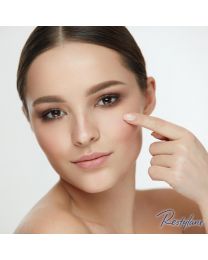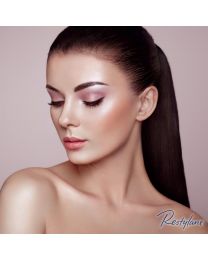- Home
- About
-
- < Shop By Skin Type or Condition
-
- < Services for
- Acne/Sensitive Skin
- Age Spots/Sun Damage
- Cheek and Lip Enhancement
- Dark Circles
- Dehydrated Skin
- Eye Wrinkles
- Facial Veins/Capillaries
- Facial Volume Loss
- Frown Lines
- Hair Restoration
- Hyperhidrosis/Sweating
- Hyperpigmentation/ Uneven Skintone
- Large Pores
- Jawline Volume Loss
- Melasma & Freckles
- Rosacea/Redness
- Scars
- Skin Laxity
- Stretch Marks
- Submental Chin
- Thin Lips
- Uneven Skin Texture
- Unwanted Fat/Cellulite
- Unwanted Hair
- Wrinkles
- Wrinkles & Fine Lines
- Contact Us
- Sign In
- Sign Up
Fight Signs of Facial Aging and Reveal a younger-looking you.
$800.00
Restylane is a clear gel formulation of hyaluronic acid that is specifically formulated to act like your body's own naturally produced hyaluronic acid, helping to visibly correct moderate to severe facial wrinkles and folds, including the lines that run from your nose toward the corners of your mouth (nasolabial folds) and the lines that run from the corners of your mouth toward the chin (marionette lines).
Additionally, Restylane and Restylane® Silk are FDA-approved for lip enhancement in patients over the age of 21 and are uniquely formulated to give your lips fullness and definition.
| Benefits |
|
|---|---|
| FAQs | What is Restylane®? How long does Restylane® last? Has Restylane® been studied? Who should not use Restylane® (Contraindications)? What are some warnings to consider? What are some potential risks you may encounter? The use of Restylane® in African-American patients can result in darkening of skin color (hyperpigmentation ), which may take several weeks to correct. If you have previously had facial cold sores, an injection can cause them to come back. The safety of Restylane® used with other skin therapies such as laser, mechanical or chemical peeling, and hair removal has not been established. The use of Restylane® with these skin therapies may lead to other side effects such as inflammation. You should avoid exposing the area(s) treated with Restylane® to excessive sun or UV lamps, and extreme heat and cold until any redness or swelling has disappeared. Clinical volunteers keeping diaries reported the following short-lived events: What are the major side effects? In rare cases injection into a blood vessel could also result in vision changes (including blindness) and stroke. Rarely, a few people have developed infections that must be treated with antibiotics or other treatment. Infection may be hard to treat, but will generally go away when the gel is absorbed. |
| Treatment Type | Filler, Injectables |
| Treatment Problem or Condition | Acne Scarring, Facial Volume Loss, Fine Lines, Sagging/Loose Skin, Scars, Wrinkles |
| Brand | Restylane |
Write Your Own Review
Restylane® is injected into the skin with an ultrafine needle to plump the skin to smooth away wrinkles and folds such as the lines from your nose to the corners of your mouth (nasolabial folds) or your lips.
Restylane® is a gel of hyaluronic acid generated by Streptococcus species of bacteria, chemically crosslinked with BDDE, stabilized and suspended in phosphate buffered saline at pH=7 and concentration of 20 mg/mL.












